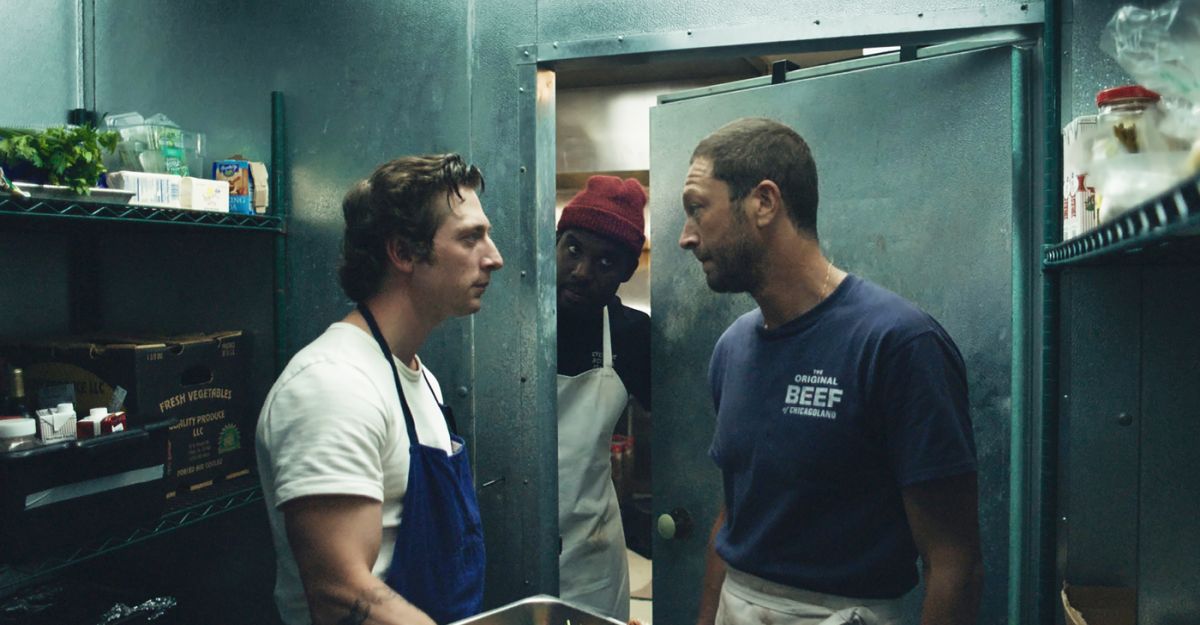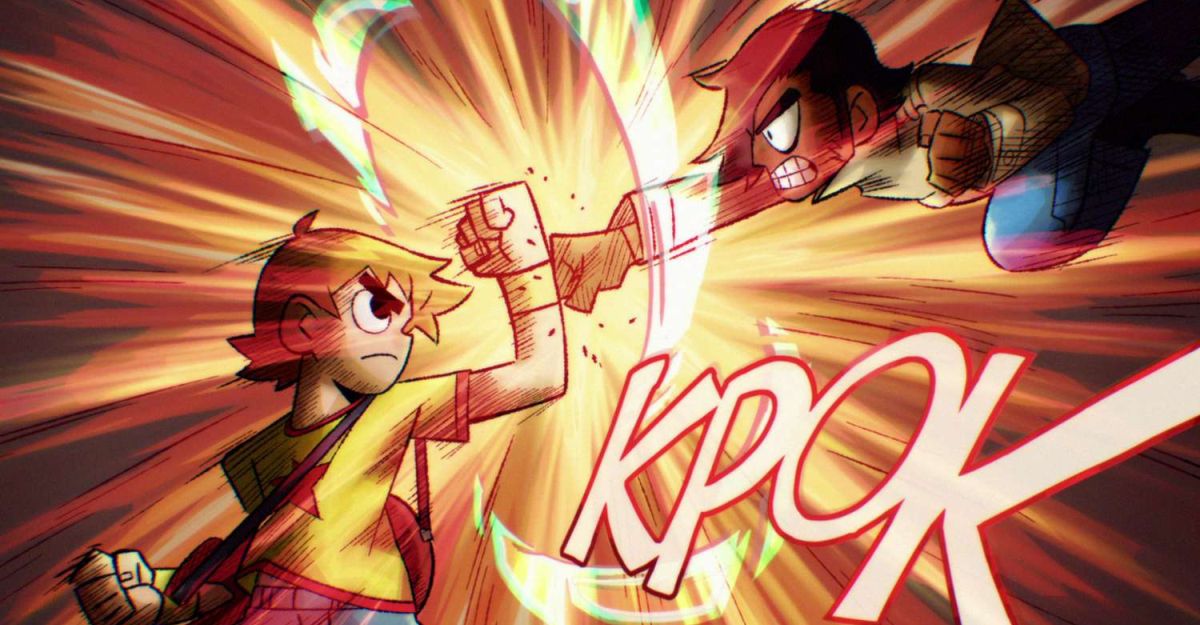At the end of the first season of Netflix’s fantasy/sci-fi series Sweet Tooth, the protagonist—a young, human-deer hybrid named Gus—narrowly escapes vivisection at the hands of the mild-mannered Dr Singh. The doctor is thrown by Gus’ ability to speak, as well as his resemblance to Sarawsati, the goddess of learning, who once appeared in the form of a red deer. ‘I need more time with this one’, Dr. Singh says, and operates instead on a much less cuddly specimen: a scaly child with bulbous lizard eyes and a roaming tongue.
The figure of the chimera takes its name from a monster from Greek mythology composed of many different animal parts, but is widely used to refer to the amalgamation of human and animal, and has always been an intensely mysterious and potent symbol. Across many different cosmological frameworks, religions, myths and folk traditions, hybrids are entangled with the question of where we came from and where we are going. There’s the jackal-headed Anubis, god of the Dead; the ancient Sphinx with her lion’s body, woman’s head and the wings of a falcon; Ganesha, the elephant-headed Hindu deity; the Greek god Pan with his man’s torso and goat legs; the selkies of Celtic and Norse mythology or the Kitsune of Japanese folklore.
Sweet Tooth isn’t the only show released this year that uses human-animal figures to address questions about human nature: there’s also Sexy Beasts, a high-concept dating show in which contestants wear elaborate prosthetics—usually of animals, but sometimes of gods, mythical creatures or monsters—to mask their true face in the hope of finding love beyond the shallow appeal of the flesh. These live-action portrayals mark a move away from the animated realm that was previously the domain of human-animals (the anime series Beastars, for example, a high-school drama in which all the characters are animals and in which carnivores and herbivores tenuously coexist; the tragicomic Bojack Horseman, in which animals and humans live alongside and date one another; or Aggretsuko, whose main character is a red panda office worker who vents her rage via death metal karaoke).
TV’s apparent increasing willingness to engage with hybrid figures, though, is deceptive. Both Sweet Tooth and Sexy Beasts ultimately fail to deliver on their respective promises. In our desire to smooth over the relationship between human and animal, we are avoiding the actual messages that the chimera holds for us.
In John Berger’s 1977 text Why Look at Animals, the critic writes: ‘Everywhere animals disappear’. It is an oft-cited paradox, referring both to the increasing absence of animals in the daily life of humans over the past two centuries and a rise in their proliferation in popular culture in new, domesticated forms. This domestication, Berger says—exemplified by the zoo, but also noticeable in children’s toys, Disney films, and the practice of keeping pets—relegates the actual animal to a position of extreme marginalisation, eradicating the ancient source of its power: its ability to look back.
In the animal’s gaze, humankind finds not only a sense of interspecies companionship, but also something more intangible: a secret message that orbits the unanswerable question of what, exactly, humankind is. The relationship between humans and animals, though it was once one of incredible proximity, has always been marked by something deeply mysterious. The animal facilitates a glimpse at something that lies beyond the outer limits of human comprehension.
According to Berger, the definitive break with the animal subject within Western thought happened with Descartes. The Cartesian theory of the ‘animal-machine’ and the separation of body and soul formed the rationale for the Enlightenment, setting up a whole host of binaries (culture vs nature, mind vs body, knowledge vs instinct) that were deployed to justify the colonial project and mark out some peoples as less ‘human’ than others (see, for example, Maneesha Deckha on this).
Around the time of the publication of Darwin’s Origin of Species, the chimera was taking on an anxious, gothic form, speaking to fears of the corruptibility of the human subject. Mary Shelley’s Frankenstein (1818) told the story of an inhuman creature patched together from both human corpses and animal parts. In 1896, HG Wells’ The Island of Dr. Moreau explored the efforts of a scientist to create a ‘superior race’ of Beast-Folk made from human and animal bodies via vivisection. In these stories, the chimera is a far cry from the deities like Anubis who—in straddling human and animal worlds—acted as a bridge between mortal and non-mortal, earth and beyond. Instead, hybridity became something horrific, unnatural, signifying the potential downfall of humanity.
Throughout the late twentieth century and early twenty-first, popular depictions of human-animal hybrids gave way to that of their cousin, the cyborg, or human-machine hybrid. The cyborg, too, evokes concerns about the ‘purity’ of human nature and of the human body. Unlike the human-animal hybrid, however, the cyborgs we see in films like Blade Runner (1982), Her (2013) and Ex Machina (2014) are free of the nostalgia that—according to Berger—now taints all appearances of the animal in popular culture, reducing the animal subject to a plush shape that serves the sole purpose of reassuring us that our connection to the natural world is not lost.
Now, in the early 2020s, at a time when it is increasingly clear that human fate is inextricably connected to that of the many other species on the planet, chimeric figures are beginning to reappear. The shift towards live-action chimeras in particular reflects the growing scientific possibility of creating actual human-animal hybrids: earlier this year, scientists successfully created the world’s first human-monkey hybrid embryo, which was allowed to grow for twenty days before it was destroyed.
Even though species essentialism has been widely discredited within biological science (there is no agreed upon definition for what counts as a ‘species’), there is still enormous scientific and public opposition to such experiments, because they raise questions and highlight truths that—as bioethicists Jason Scott Robert and Françoise Baylis warned in 2003—‘threaten the social fabric in untold ways’.
Beneath the sense of visceral aversion commonly felt towards hybrids is an existential terror stemming from a recognition of the tenuousness of the category of ‘human’. This anxiety becomes particularly prevalent during a pandemic, which highlights the permeability of human body to foreign organisms—hence, among other things, the popularly held belief that the Astra Zeneca vaccine ‘contains chimp DNA’.
In Sweet Tooth, the hybrids are all children—a new generation were born at the same time as a deadly virus known as ‘the Sick’ was decimating the population and catalysing rapid societal collapse. There is an intense suspicion around the hybrids, towards whom most people, we are meant to believe, experience a visceral revulsion even though the creatures are painfully cute, their perfect child faces interrupted by artfully placed patches of fur, a cute little pig nose, a set of whiskers, a pair of horns. There are a few details thrown in at the beginning, such as the fact that Gus is ‘nocturnal’, his eyes gleaming eerily in the dark; he has a heightened sense of hearing and smell; and he feels an affinity to a wild deer in the woods who he mistakes for his ‘mother’. But none of these details are meaningfully built into the plot: most quickly fade out, leaving us with little more than an ordinary-looking child with antlers.
This dichotomy between attraction and revulsion is interesting terrain. Explored more daringly, it would speak to the very real emotional response to chimeric creatures, one that bears an echo of what Berger identified as the source of the power of the animal’s gaze: the tension between similarity and difference, between familiarity and unfamiliarity (animals, Freud might say now, are essentially uncanny). But in its desire to use the chimera as a bridge between humans and the ‘natural world’, Sweet Tooth flattens its hybrids into something too familiar. The mystery of the ‘animal gaze’ is lost.
Though Sexy Beasts has a very different premise to Sweet Tooth, it falls short on a similar account.
There was a lot of excitement around the show when it first came out, due to the assumption that all its aesthetic emphasis on hybridity might translate to a more complex and nuanced picture of love and attraction. Unfortunately, Sexy Beasts is unabashed in its essentialism, taking as its premise the idea that sexual desire is nothing more than a remnant of our animal origins.
Each episode is structured around a heterosexual competition: three women vying for the affections of a man, or vice versa. The contestants are vain, arrogant, and all attractive within the framework of conventional beauty standards. Each claim that they are appearing on the show to transcend their shallow instincts and rediscover a more ‘human’ connection: ‘I’m a boob man’, says one contestant. ‘Ass first, personality second’, says another. There are surreal and accidentally subversive moments when they try to kiss despite the prosthetics, encountering a whisker, or set of protruding fake beaver teeth, but ultimately the prosthetics are little more than a mask, and ‘animality’ in question is—as Berger wrote—merely a thin veil for ‘the pettiness of social practices’, universalised through their projection onto the animal kingdom.
Ultimately, both Sweet Tooth and Sexy Beasts present an intensely domesticated version of the chimera: one that is familiar and human enough to not open any epistemological holes. There are, of course, some good examples of films, TV shows and books that—while not depicting chimeras per se—begin to approach the mystery of the non-human: Ali Abassi’s Border, for example, features a strange Swedish customs officer as its protagonist who turns out to be an ancient troll; and the new Icelandic series Katla features volcano-born changelings who call the identities of their human counterparts into question. In their return to folklore and myth, such stories challenge the idea that everything on the planet is knowable through an empirical lens.
The fictional human-animal hybrid has a lot of promise, but it seems there’s a long way to go before we are ready to look closely at what the animal means for our sense of self. Robert and Baylis argue that the key threat of hybrid creations is the ‘moral confusion regarding social and ethical obligations to novel interspecies beings’. The word confusion comes from the Latin confundere, meaning ‘mingle together’. To enter a state of confusion is to enter a state of hybridity, a bewildered state, where post-Enlightenment ways of knowing are decentred. Moral confusion, maybe, isn’t such a threat after all. Maybe it’s the only thing that will save us.






